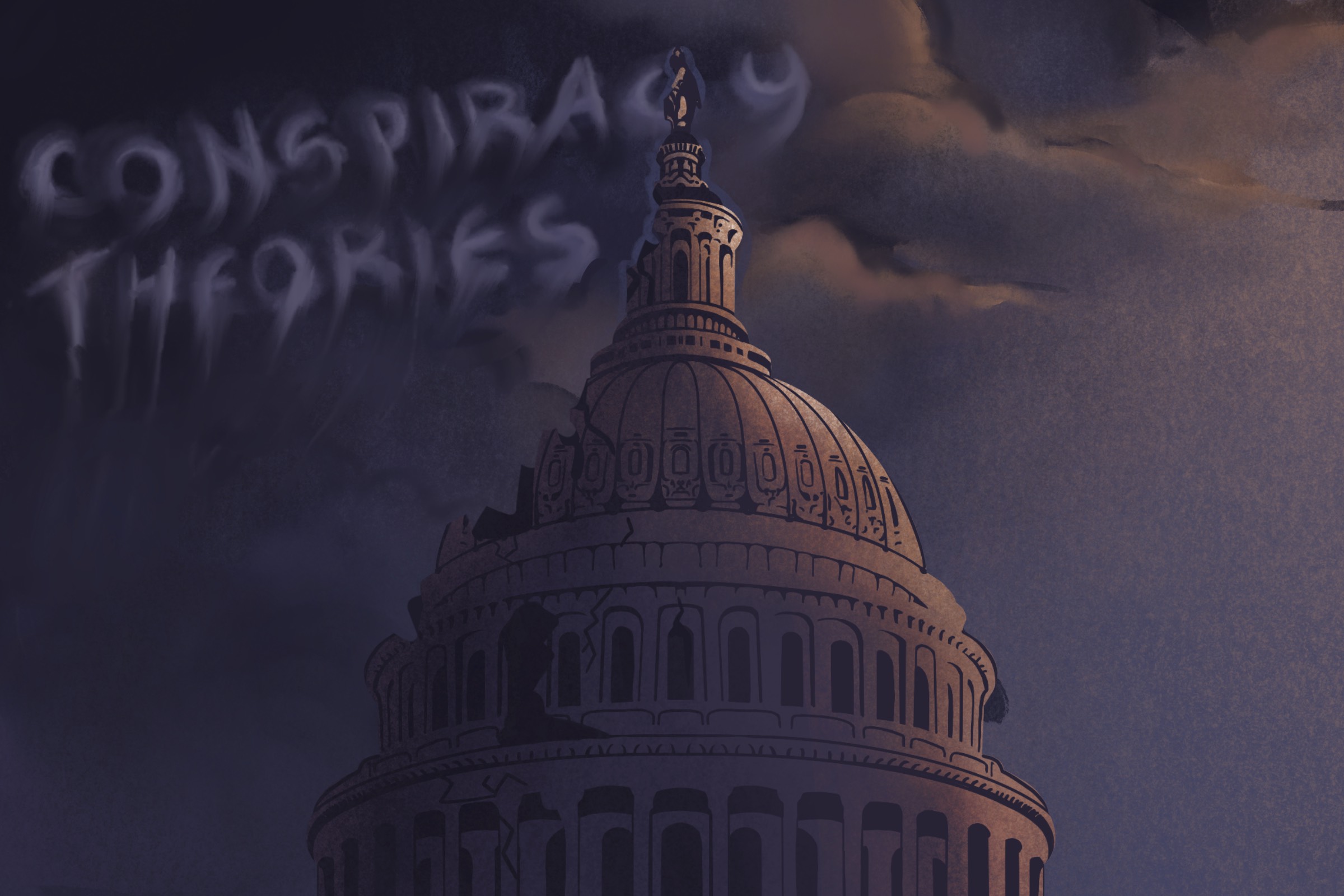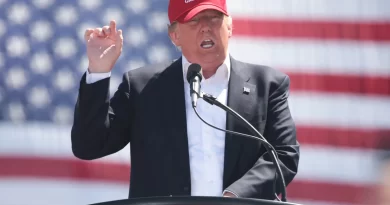The allure of election-year conspiracy theories

The American political system has always been riddled with conspiracy theories. Since the country’s earliest days, whispers of hidden agendas and undercover operations have entered our political discourse. In 1963, the belief that the government was involved in the assassination of former President John F. Kennedy took root, and in 2008 came the “birther” conspiracy that former President Barack Obama faked his birthplace to become president. More recently in 2016 were the “Pizzagate” rumors that claimed the Democratic Party was linked to a pedophilia ring running out of a Washington, D.C. pizzeria.
In addition to being wildly untrue, these theories have real consequences. For example, when conspiracy theorists claimed that COVID-19 was a hoax started by the government, many responded by not getting vaccinated and refusing to wear masks in public. This not only put themselves at risk, but also contributed to the virus’s spread, leading to unnecessary deaths. Those who rejected preventative measures were among the most vulnerable, with many ultimately losing their lives to a disease they denied.
The 2024 presidential election saw another rise in conspiracy theory circulation on social media, and they gained traction with an anxious electorate. After the assassination attempt on President-elect Donald Trump, rumors quickly spread that the incident had been orchestrated by President Joe Biden as an attempt to manipulate the public. Despite any credible evidence, the theory gained momentum online, further reflecting how conspiracy theories thrive in polarized environments.
From lies about the origin of COVID-19 to assassination attempts, conspiracy theories are making a mockery out of our leaders. Being tied to a conspiracy not only undermines the credibility of political institutions and those in power, but also makes them seem less trustworthy. Leaders associated with conspiracies, either by active involvement or simply by being the target, risk looking secretive or sketchy. The more they try to deny the rumors or explain themselves, the more people think they are hiding something. As the concern of deceit intensifies, citizens are less likely to believe in their leader’s ability to effectively govern. While the pool of misinformation grows, it fuels a dangerous erosion of trust that is hard to correct.
Over the last 20 years, government distrust has surged, with a 2023 Pew Research Center study showing that public confidence in government and political institutions has reached historic lows. A mere 16% of Americans say they trust the federal government. Instead of allowing us to address real issues, conspiracy theories create chaos and dig us deeper into a hole of misinformation and distrust.
During election cycles, these theories gain traction because they give people a sense of control in a time of uncertainty. When faced with complex political, social and economic issues, many turn to these narratives because they offer a scapegoat. It’s easier to think that the system is rigged and that someone, somewhere is pulling the strings than to accept that real-world problems may be unsolvable or require difficult trade-offs.
Research suggests that people are drawn to conspiracy theories for three reasons: to make sense of their surroundings (the “epistemic” motive), to feel secure and in control of their environment (the “existential” motive) and to uphold a positive social identity and self-image (the “social” motive). The first one, the epistemic motive, is about finding an easy explanation for what’s happening. It doesn’t matter if it’s flawed. The existential motive kicks in when people feel powerless. They latch onto conspiracy theories as a way to maintain some sort of control. Finally, the social motive makes people feel like they belong by aligning themselves with a group that shares their views. In this sense, conspiracy theories create a sense of community.
Social media has only made this problem worse. It’s no longer just a small group talking conspiracies in secret; these ideas are shared with millions of people at the click of a button. Platforms like TikTok and X are breeding grounds for misinformation with algorithms designed to increase engagement, not accuracy. When a post is shared quickly or generates a reaction from viewers, as many conspiracies do, the algorithm forces it onto people’s feeds.
The result is an uncontrollable spread of misinformation that influences public opinion and behavior. It can sway elections, fuel polarization and influence people’s well-being, as seen with COVID-19. The theories are more than just a trend on social media; they threaten democracy and foundational American values. There can’t be productive debates with so many lies flying around. Instead of having discussions based on facts, we get trapped in echo chambers that reinforce, rather than challenge, our existing, and sometimes misguided, beliefs.
The government faces a difficult situation of balancing protecting free speech and minimizing misinformation. The debate has prompted statements from tech giants, such as Meta CEO Mark Zuckerberg, who recently addressed the House Judiciary Committee. Zuckerberg claimed that Meta was pressured by the Biden administration to censor certain COVID-19 content. This raised questions over how much control the government should have over our online content consumption. While we should be concerned about the spread of harmful misinformation, censoring content would be a direct violation of people’s freedom of expression.
The reality is that misinformation will always spread on social media and it’s impossible to take action without in some way compromising First Amendment rights. America touts its freedoms and democratic practices, but that comes with a responsibility. We need to think more critically about our media consumption and how we come to understand what the truth is. Just because something is online doesn’t mean it’s real or credible. Ultimately, it’s on us as individuals to avoid perpetuating false narratives, no matter how convincing they may be. Without a shift in user behavior, the current cycle of misinformation will continue to thrive.
It’s important to recognize the difference between healthy skepticism and full-blown conspiratorial thinking. Questioning authority and holding the government accountable are all essential parts of democracy, but it becomes a problem when we start to believe every claim we read online. As students and young voters — particularly the 41 million members of Gen Z eligible to vote in the 2024 election — we have a responsibility to discern between fact and fiction.
With so much of our generation spending an alarming amount of time on social media and the internet in general, it’s easy to get sucked into this misinformation rabbit hole. We should be double checking sources, reading beyond catchy headlines and having conversations that go past confirming what we already believe. It’s tempting to give in to easy answers, but conspiracy theories are just a shortcut that diverts us away from the truth.
This isn’t just about sharing a couple of sketchy posts online, it’s about seriously hurting our democracy. At the end of the day, it’s up to us to make sure our conversations — and our votes — are grounded in facts. That is the only way to make a difference and create a future free from the dangers of misinformation.
Téa Santoro is an Opinion Analyst studying economics. She writes about how financial trends impact students’ experiences and can be reached at aristea@umich.edu.


